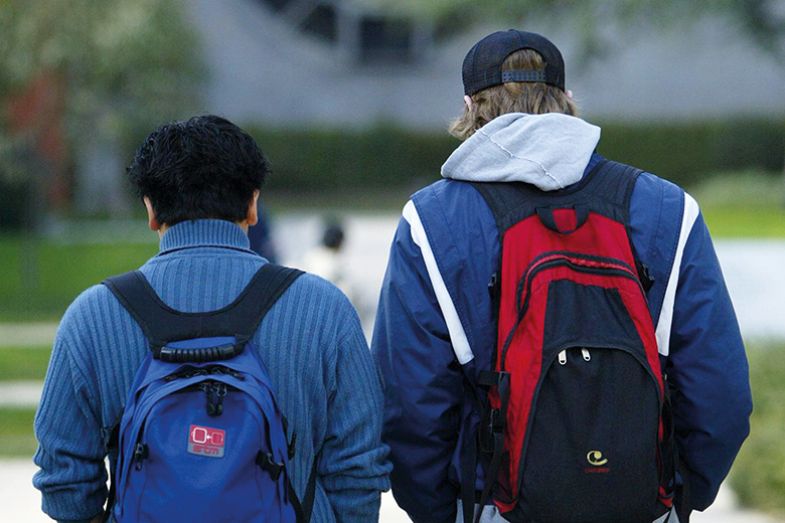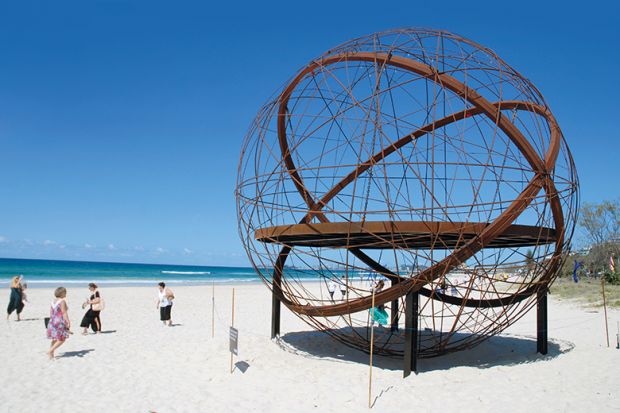Browse the full results of the World University Rankings 2019
What should be taught and how it should be taught remain the academic essence of university education. They are key to the autonomy and freedom that underpins higher education in Australia, as well as in the European traditions from which we were born. These questions are also perennial topics for public discussion, along with more recent preoccupations about how we should define and measure teaching and learning quality.
In every developed economy, we see unfolding discussions about how nations should grow employment and employability in an era of technological disruption characterised by automation, big data analytics and AI, as well as other forms of innovation, barely comprehended and still to come.
Guiding the development of knowledge and expertise for students so that they not only perform the roles needed for a modern, competitive workforce, but transform them, is core to a university’s purpose. To do so successfully, universities must enable students to create opportunities and adapt to challenges yet to come.
Download a copy of the THE World University Rankings 2019 digital supplement
Students in Australia are interested in entrepreneurialism and start-ups, which reflects not only growing awareness about the importance of producing graduates who are “future ready” but the desires of students to embrace a more independent start to their careers.
This impulse reflects an openness to the opportunities that those students see in a globalising and digitising world. It stands alongside a shift in student expectations about what they will derive from university: a more comprehensive and diverse international experience than we have previously seen.
It is not much remarked on, but it is part of a globalisation that has been fuelled by university strategies driven by student demand not just for a university education but one that prepares them for this increasingly globalised economy.
There are benefits to the high numbers of international students studying at Australian universities. This year, more than half a million foreign students have already made their way to Australia, the majority of them enrolling in a university. These students provide impetus to internationalise courses and explore better ways to integrate the domestic and international student experience.
More than 20,000 international students study at Monash’s campuses in Australia, representing more than 26 per cent of the total student population. And they have ensured that students who study at Monash find themselves in a diverse community drawn from many nations. However, while this population has helped to transform Australian university education, it has also helped Australia to engage more richly with the world, particularly the Asia-Pacific region in which Australia sits.
Student demand for degrees that have a global focus and incorporate global challenges and experiences is high. One in five Australian undergraduates participates in some form of overseas study as part of their degree. In 2017, Monash University alone sent more than 4,000 students on study experiences outside Australia, with this figure projected to rise to at least 4,500 in 2018.
The major destinations for such students were once the UK and the US. In the past five years, China and other countries in the region have become as important as destinations in Europe as places that Australian university students choose to go on exchange or industry placement.
Australia’s relationships with other countries and other cultures, including those of our closest neighbours, are a major element of the world into which our graduates go. This requires Australian students to be literate about other cultures and adept at engaging with them. The internationalisation that has long been the aspiration of university education has, in Australia, in recent years become more real for more students and more diverse in the cultures and influences that are incorporated.

Diversity of the student population and overseas study experiences are part, but not the whole story, of internationalisation. Monash’s journey along the path of internationalisation shows the changes to be wrought in international engagement. In recent years, in particular, the university has leveraged its international alliances to redesign the nature of the student experience.
Monash has enrolled international students since it first opened its doors in 1961 but the extent of that international cohort is now significant, with about 11,000 students on campuses outside Australia adding to the more than 20,000 international students on the university’s home campuses.
Monash set up its first branch campus in Bandar Sunway, Malaysia, in 1998, becoming the first foreign university in the country. Now with more than 7,500 students in faculties from arts and science to engineering, medicine and pharmacy, it is a vibrant, research-active campus with some 400 PhD candidates.
These were early steps in what has been a major and continuing journey to engage internationally, not only in education but in research and innovation. While Monash’s strongest connections were in the Asia-Pacific region, it has also expanded into Europe.
Search our database of more than 3,000 global university jobs
Monash is one of only two Australian universities to maintain a campus in Europe. In 2001, the university acquired an 18th-century palace, the Palazzo Vaj, in the historical centre of Prato, Italy. Today, after extensive redevelopment of the building and grounds, the Prato Centre draws more than 700 Monash students each year to study nearly 100 courses that span disciplines from international law, business and politics to Renaissance history, fine art and design, and astronomy, and hosts executive education for the European market.
Monash has also built partnerships and campuses that focus on research and postgraduate education. In 2008, the university began a unique collaboration with the Indian Institute of Technology Bombay, providing dual-badged PhD training, supported in part with industry engagement. Students enrolled in the IITB-Monash Research Academy spend at least one year at Monash in Australia, gaining exposure to Australian researchers before they return to India. The reciprocal programme has begun, with Australian students spending 12 months in India to be awarded the joint Monash-IITB PhD degree.
The IITB-Monash Research Academy operates at a scale greater than any other Australian-Indian collaboration. Enrolments have increased sevenfold, from 21 to 183 PhDs, with 73 graduates, more than 400 researchers and 500 research projects to date. Graduates of the academy are typically employed well before graduation, by leading global companies such as Amazon, Microsoft and Tata Group, as well as universities and research institutes.
Monash also operates this model in Suzhou, China, with South East University, where it runs a number of joint master’s programmes. Again, these campuses have begun by combining research with education and embedding time spent in more than one country as part of the course.
It seemed time for Monash to focus more deliberately on our students’ international capabilities, so this year we launched the Global Immersion Guarantee (GIG), a two-week overseas experience available to all 8,000 undergraduates in the Faculty of Arts. Supported by the New Colombo Plan (a competitive programme funded by the Australian government), Monash covers the cost of airfares, accommodation and local travel, with students paying only for food and other living expenses.
This is not a standard exchange or study abroad opportunity, but a curated experience of global immersion. With a choice of four study destinations in Italy, Malaysia, Indonesia or India, the GIG will offer thousands of Monash students an opportunity to deepen their understanding of another culture while they explore first-hand the relationships between society, technology and the environment.
The international experience underpins what should be taught and how it should be taught to students who seek to carve a place in a world where national borders are not important.
Margaret Gardner is president and vice-chancellor of Monash University and chair of Universities Australia.




